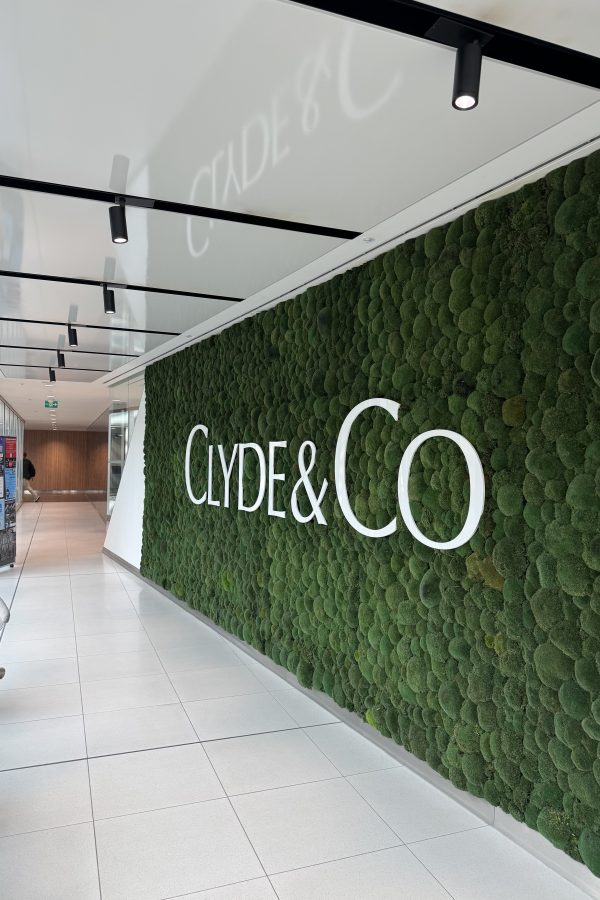Fears about the ‘great resignation’ in the legal and wider professional services sectors have dominated the headlines over the past six months.
Lockdowns gave employees time to think about their careers, which caused many to question whether their organisation was the right fit for them, and a shortage of job candidates has led to firms making incredibly attractive offers to individuals in order to fill vacancies.
A poll at last month’s People in Law Conference found that 44% of HR professionals said their current rate of attrition was higher than pre-pandemic levels, which will no doubt be putting teams under significant pressure.
While staff retention has always been part of HR’s remit, many firms’ strategies are often seen as reactive and generic, and may fail to take into account individuals’ needs and the reasons why they are looking to change jobs.
Firms now need to be thinking about how they can help keep a talented individual in post from their very first day – not only when they hand in their notice.
Be proactive
Tess Harris, HR business partner at DAC Beachcroft, says: “The mobility of talent is much higher than it has ever been before, and thinking about retention early on is the right thing to do anyway – to give people meaningful careers, make sure they feel engaged and attached to the business, and it also makes commercial sense.”
Johanna Tross, talent manager at Pinsent Masons, says staff engagement and retention should be a “constant top priority”, especially when the jobs market is so buoyant.
“We can no longer rely on our brand or employee loyalty as people are thinking with their feet,” she says.
Tailored strategies
One of the reasons why a retention strategy can fall flat is that it doesn’t speak to individuals – what may be attractive for an employee in marketing may not convince a lawyer to stay with a firm, for example. But is it feasible for firms to tailor a retention plan to an individual?
“In an ideal world you’ll probably have a retention strategy on a departmental level,” says Harris. “It’s not really realistic to have a completely individualised retention strategy for each person, given how pressured their line managers are.
“But we should still be doing more, and better, at working towards a tailorable general proposition and is an important current focus for us”
A retention strategy should contain elements that will appeal to a wide and varied group of employees, but HR and managers should be open to having conversations about individual needs if they want to convince somebody to stay, suggests Tross.
“We know that many employees are feeling fatigued and undervalued, others have reflected during the past 20 months and are now looking for more or different challenges. Therefore I would say the key component to any retention strategy is to put in place, or re-emphasise existing, methods of listening to what your employees want and how they are feeling.
“Not only will this serve as a cathartic process, but it will enable the business to respond accordingly.”
What a strategy should look like
Harris says that a good retention strategy should consider career progression; culture; remuneration and benefits; and good quality, diverse work opportunities. These underpin the DACB employer brand strategy known as A Life That Works, which aims to let colleagues bring their whole selves to work.
“There should be a broad range of opportunities so they feel they are developing, progressing, being paid fairly, and engaging with the organisation. If you can hit all four quadrants with everyone then you’re doing extremely well,” she says.
Tross says it should also involve learning and development opportunities, investment in staff wellbeing, and mentoring.
“This should include applying the 70:20:10 model of learning, provide new on-the-job learning opportunities as well as innovative ways of formal learning,” she says.
“In this new world where people are craving more personal relationships, guidance and support, mentoring programmes can be really effective.”
The role of line managers
But having the right strategy in place is only the first step in retaining talent. With it often said that “employees don’t leave companies, they leave managers”, HR needs the support of line managers if they’re going to stop individuals looking for pastures new.
Tross says managers often “shy away from asking employees what they want or need either on a personal and professional level in case they cannot deliver it”.
“This is a shame, especially since in the majority of instances had we have known the issue, or what was being sought, then we could have worked together to resolve it,” she says.
David Phillips, managing director at skills development provider City & Guilds and the Institute of Leadership and Management (ILM), says retention requires a team effort from managers and HR – with HR thinking about this more holistically and line managers reviewing individuals.
“With research from Gallup Global data showing that just two in 10 employees strongly agree that their performance is managed in a way that motivates them to do outstanding work, it’s clear that managers can have a huge impact on people’s attitudes towards their job, including whether or not they look to move roles,” he says.
“Managers need to develop strong working relationships with their team members to understand how they are doing, where they need support and development and what’s next for them in terms of their working life.”
Harris adds: “What we do have to remember about law is that line managers don’t just manage; it’s not their full time job and they have chargeable targets to hit.”
She suggests line managers are better motivated to increase the time they spend on team engagement and development if it is part of their remuneration and bonus package. Performance in this area can often be hard to quantify, but firms should at least reward line managers that display the behaviours they wish to see.
Responsibility for development and engagement also extends to those with supervisory responsibilities, who may not be an employees’ direct manager.
Equipping managers
Harris says it’s HR’s job to ensure that managers have the tools and information they need to help their teams thrive.
“If an employee needs development or wants to learn certain skills, HR needs to have provided line managers with the tools they need so that they can outline the development opportunities that are available,” she says.
“We need to be equipping line managers with the knowledge they need to understand the bonus and remuneration structures so they can have meaningful conversations with people about that, and about the requirements for promotion and supporting them through that process. In response to this urgent need we have recently expanded our L&D team to address this vital skills gap for our hybrid working model.”
Building up this skillset should begin when someone takes on line management responsibilities for the first time, adds Harris. “We need to outline what is expected of them and impress on them the importance of it viewing it as part of their overall responsibilities.”
Tross says that training and peer-to-peer learning for line managers is important, but senior leaders must also reinforce the message that people development is key to a firm’s success.
“There needs to be an authentic commitment by the leadership that recognises the importance of retaining and developing their people which ensures the associated activities are prioritised. People management will inevitably fall to the bottom on a busy line manager’s list, however this shouldn’t be the case,” she says.
Providing managers with data and trends around attrition will also reinforce why this is important, suggests Phillips.
“Make sure that people leaders have easy access to qualitative and quantitative data to help them understand what their staff retention rates look like. Review key points and trends from things like exit interviews to understand if there are themes that need to be addressed and listen to your employee engagement survey results, and pay special attention to any comments employees attach to their responses,” he says.
The right behaviours
Ultimately, firms need to ensure their managers have the qualities and behaviours needed to motivate and engage talented individuals.
The ILM’s Leading Through Challenging Times research in 2020 identified the qualities that employees felt had been most lacking among managers during the pandemic. Both empathy and emotional intelligence (31%) and empowering and motivating their teams (36%) were among the most widely cited shortfalls.
Phillips says: “Covid-19 and the widespread adoption of remote working has highlighted the importance employees place on feeling that they are empowered and trusted by their managers to make decisions and use their judgement to do their job. The number of people who felt that their managers needed to do more to empower and motivate their teams clearly indicates that this is a priority for workers, many of whom will actively seek out organisations that give them this freedom as they progress through their careers if it is not available in their current role.”
Focusing on engagement and development from the moment an employee walks in the door is only part of a successful retention strategy. Without the commitment from line managers, efforts to retain talent are destined to fall flat.










